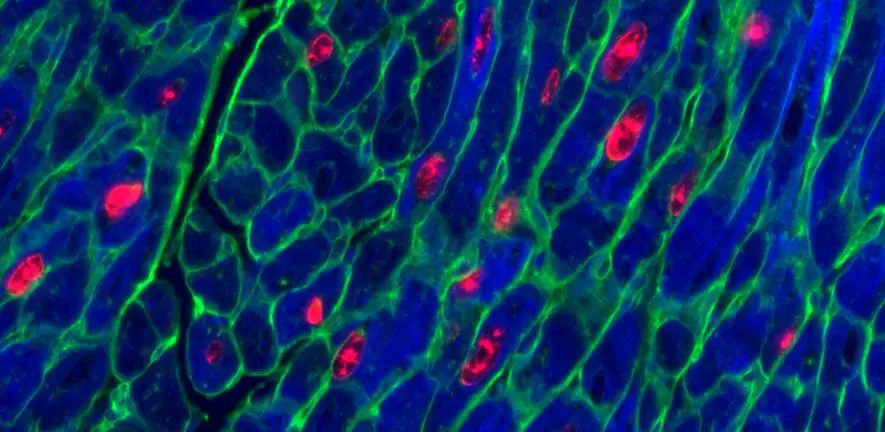Unfortunately for heart attack patients, heart cells don’t naturally replenish, so this vital organ stays permanently damaged. But now, Cambridge researchers have stumbled onto a gene that appears to trigger heart cell regeneration – and they did so by accident, while researching cancer treatments.
After a heart attack, the human heart will patch itself up with scar tissue. That helps keep the organ together, but this tissue doesn’t beat like healthy heart cells do. Over time, this leads to further attacks, heart failure and often death.
Scientists have been experimenting with ways to replenish heart cells, and promising leads so far include bioengineered scaffolds, placental stem cells, and boosting other cells around the heart.
For the new study, the Cambridge team discovered that two genes working together switched the heart into a regenerative state. In mouse tests, the researchers ramped up expression of the Ccnt1 and Myc genes, which kickstarted cell replication and increased the number of heart muscle cells.
“This is really exciting because scientists have been trying to make heart cells proliferate for a long time,” says Catherine Wilson, lead researcher on the study. “None of the current heart disease treatments are able to reverse degeneration of the heart tissue – they only slow progression of the disease. Now we’ve found a way to do it in a mouse model.”
The team examined the mouse hearts using a sequencing technology called ChIP, and uncovered just what the two genes are doing to help. Myc produces a transcription factor that should be able to activate gene expression, but it wasn’t triggering cell proliferation in the heart. The researchers realized that a protein called Cyclin T1, produced by the Ccnt1 gene, was required to get the cells replicating again.

But perhaps the most interesting part of the story is that the researchers essentially made this discovery by accident. Initially, they set out to find ways to shut off the Myc gene, which is overactive in most cancer types.
A normal step in medical research like this involves testing the opposite of the target – so, for instance, if the goal of the study is to investigate what happens when you turn off a gene, the team also ramps it up in one group of test animals. That ensures that this gene is responsible for the negative effects you’re trying to treat.
And when the Cambridge team ramped up Myc in mice for the cancer study, they discovered the heart-restoring effects. That surprising result became the focus of the research instead.
“The inability of the heart to regenerate itself is a significant unmet clinical need,” says Wilson. “We found that even when Myc is switched on in a heart, the other tools aren’t there to make it work, which may be one of the reasons heart cancer is so extremely rare. Now we know what’s missing, we can add it and make the cells replicate.”
The researchers plan to continue studying this finding, with the hope of eventually developing a gene therapy treatment for heart disease. But, of course, care needs to be taken to ensure that it doesn’t lead to a new spate of heart cancer cases instead.
“We want to use short-term, switchable technologies to turn on Myc and Cyclin T1 in the heart,” says Wilson. “That way we won’t leave any genetic footprint that might inadvertently lead to cancer formation.”
The research was published in the journal Nature Communications.
Source: Cambridge University




